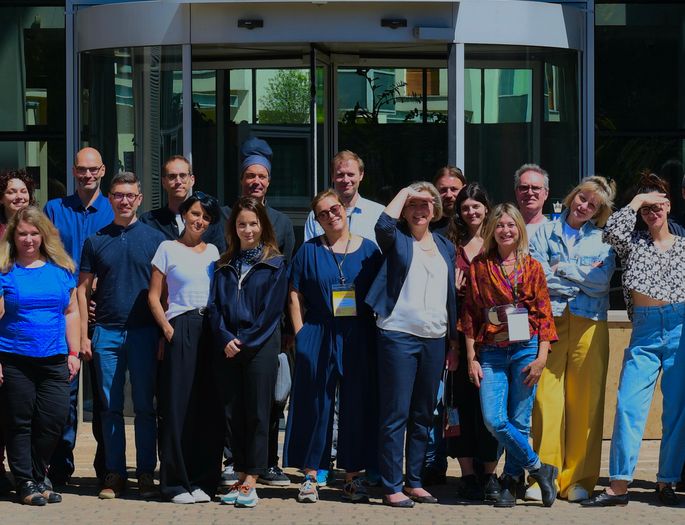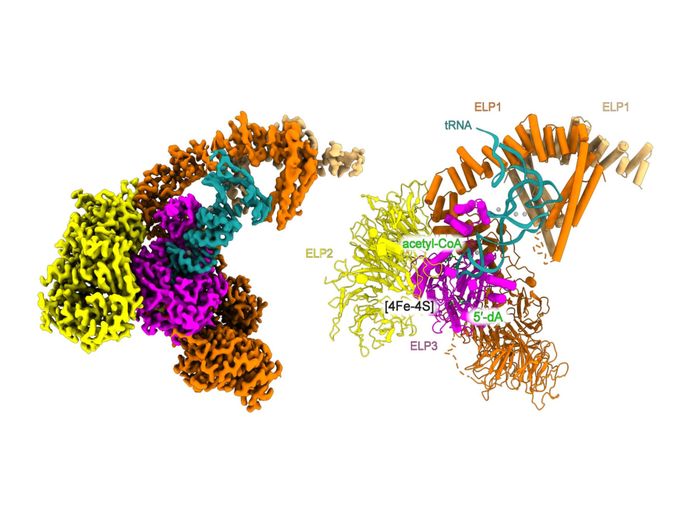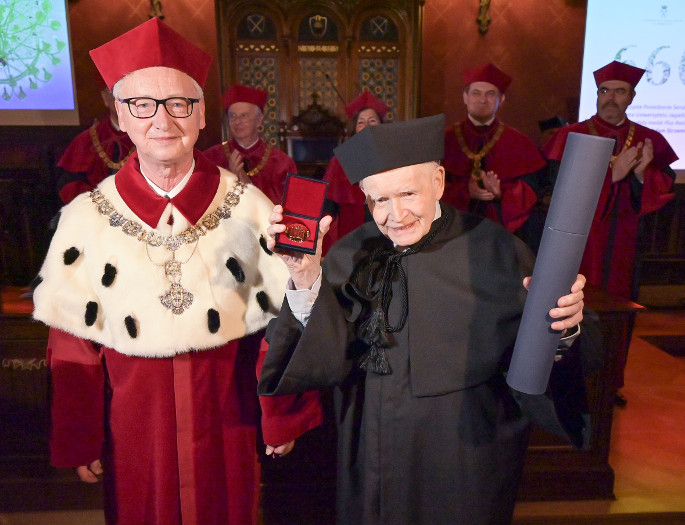
White blood cells, also called leukocytes, aid our organisms in various ways. For our bodies to work correctly, we need to be protected from infections, and white blood cells play an important role in keeping us safe. But what exactly is immunity? How does it work and why is it so important? We asked Prof. Joanna Cichy from the Department of Immunology of the JU Faculty of Biochemistry, Biophysics and Biotechnology to explain the intricacies of these issues to us.
The flu season is on. A tired and underslept organism is more vulnerable to infection, particularly when the weather is cold. Theoretically, our immune system should protect us from harmful viruses and bacteria. But does it always?
What exactly is immunity?
Immunity is based on a group of specialised cells called leukocytes, most of which are found in blood, although there are also other places where their concentration is quite high, like the bone marrow or lymph nodes, from where they can be transported to other parts of the body if needed. Since infection can happen anywhere, some types of white blood cells are spread around the entire organism to ‘patrol’ our internal organs, particularly those that are the most exposed to the outside environment. These patrolling leukocytes are the vanguard of our immune system, alerting in about potential threats and mobilising its resources to fight off sickness.
 This happens mostly when the natural barriers of our bodies, like outer skin layers or epithelium in respiratory or gastrointestinal tract, are breached by microbes, such as bacteria, viruses, or fungi. The cells on guard duty can react to intruders’ presence because of their biological dissimilarity. To detect them, they use two types of particles called receptors.
This happens mostly when the natural barriers of our bodies, like outer skin layers or epithelium in respiratory or gastrointestinal tract, are breached by microbes, such as bacteria, viruses, or fungi. The cells on guard duty can react to intruders’ presence because of their biological dissimilarity. To detect them, they use two types of particles called receptors.
One of them can be compared to a universal key that fits into numerous microbiological locks, while the other is unique and only fits one. When the white blood cells spot intruders, they immediately start acting to eliminate them. To this end, they employ two basic tools: the innate immune system and the adaptive immune system.
The first one relies chiefly on leukocytes capable of engaging and neutralising any microorganism, but not armed with ‘specialised weaponry’ – they’re useful in fighting off the first wave of the infection and containing its size. They are equipped with the universal key mentioned earlier, and are highly effective in rapid threat elimination. The adaptive immune system, on the other hand, comprises leukocytes that carry the unique key. They are a specialised task force that strike precisely on critical targets.
Strategy no. 1: Innate immune system
In the early stages of infection, leukocytes patrolling our bodies eliminate the microbes they encounter. However, these ‘overseer cells’ are usually too few and far between to stop the infection themselves. It’s necessary for them to alert the organism about the threat, so it can send some reinforcements.
This is possible thanks to alarm signals sent out by the patrolling leukocytes. These SOS messages guide new combatants to the battlefield. When they receive new coordinates, they leave the vascular system and enter the infected tissue.
At this stage, most of the white blood cells that attempt to fight off the infection belong to the innate immune system. They are able to identify a vast amount of molecular patterns, which allow them to differentiate between various families of microbes. Because of that, they usually display similar levels of effectiveness when it comes to eliminating viruses, bacteria, and fungi.
Among them are neutrophils, the most numerous leukocytes in human blood (about 60% of the total number). A healthy human being possesses several dozen million of them in their bloodstream. They are very quick and efficient in neutralising harmful microorganisms due to their impressive arsenal of destructive measures, such as antimicrobial peptides. They can also produce substances like hydrogen peroxide (the main ingredient of disinfectants), which are very effective against bacteria.
Despite their impressive capabilities, innate immune system cells are often not enough to ensure the elimination of every single intruder. Instead, they slow down the process of infection, buying time for their allies – adaptive immune system cells.
Strategy no. 2: Adaptive immune system
When the infection spreads so much that it can no longer be contained, there comes the time for the adaptive immune system response to kick in. Its main purpose is to educate a specific type of lymphocytes (another subtype of white blood cells) to fight the exact kind of microbes that have invaded the organism.
As mentioned earlier, the main strength of adaptive immune system cells is not their versatility, but precision. They are focused only on microbes that multiply in a selected part of the body. If our organism succumbs to a certain infection for the first time, we have a very limited number of lymphocytes that are adapted to its microbes and can recognise them.
Because the human body has an immense number of white blood cells adapted to different types of viruses and bacteria, virtually every microorganism has its lymphocyte counterpart. However, there is only so much immune cells we can fit into our bodies. Hence, their availability is very limited. The adaptive immune system response relies on creating a large number of ‘properly armed’ lymphocytes in order to send them to fight the infection.
The process of preparing this second strike team for combat normally takes several days. It takes place in specialised glands, like the lymph nodes. In these ‘lymphocyte training centres’ scattered around our organisms, dendritic cells process antigen material from the invading microbes and present it to lymphocytes, which study the biological patterns of the invaders to arm themselves against the enemy.
For several days, our bodies rapidly produces a large number of lymphocytes with the correct weaponry and releasing millions of them to find and eliminate a specific threat. With dendritic cells as instructors, they constantly increase their fighting prowess. When these reinforcements arrive in the infected tissue, they almost invariably turn the tide of battle in our favour.
The adaptive immune system response offers an additional advantage in the form of immunological memory. If we are ever again threatened by the same microorganism, our bodies will be able to produce an army of lymphocytes much faster, which means that the whole process of infection might pass by without symptoms.
It is evident that the immune system is based on a complex system of interrelated phenomena which affects our entire organism. It also determines our individual reaction to infections and diseases. Therefore, it’s very important to learn more about the processes that govern it, since such knowledge may aid us in preventing any harm that may come to our bodies.
Original text: www.nauka.uj.edu.pl





